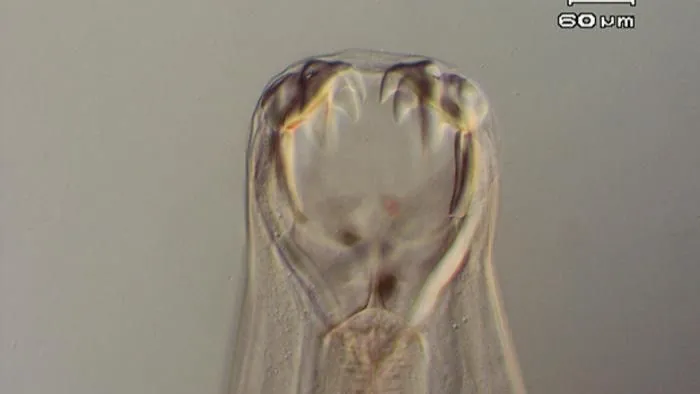
Alarming Rise of Drug-Resistant Hookworms: Are Your Pets and Family at Risk?
2025-01-10
Author: Yan
Introduction
A new study has revealed a distressing trend in the world of veterinary health: canine hookworms are developing widespread drug resistance, posing a serious threat to both pets and humans. Researchers have identified concerning resistance to benzimidazole-based dewormers—the medications commonly used to combat these parasites—in both North America and Australia.
Study Findings
Published in the International Journal for Parasitology, the study highlights that Australian hookworms, like their North American counterparts, have developed genetic mutations enabling them to effectively withstand treatments previously successful in eliminating them. The study's lead author, Swaid Abdullah, a senior lecturer in veterinary parasitology at the University of Queensland, emphasized the potential dangers, stating, "This is a big problem, as hookworm infections can be dangerous for both humans and animals."
Health Risks of Hookworms
Canine hookworms, scientifically known as Ancylostoma caninum, can lead to severe health issues in dogs, including anemia, diarrhea, and malnutrition, which can ultimately be fatal. Furthermore, these parasites can spread to humans, primarily through contaminated environments. When dogs infected with hookworms defecate, they release eggs into the soil, which can hatch and infect anyone who comes into skin contact with the larvae. Abdullah warned of a specific infection humans can contract known as cutaneous larva migrans (CLM), characterized by a painful, winding rash that can last weeks to months, although it sometimes resolves without treatment.
Public Health Concerns
Antoinette Marsh, a professor of veterinary parasitology at The Ohio State University, expressed her concerns further. Although she was not involved in the study, she noted, "If people aren't picking up the feces and allowing it to develop in the environment, then it becomes a problem for us to actually treat humans." This raises important public health issues, as improper waste management and lack of awareness can lead to increased infections.
Historical Context of Drug Resistance
The emergence of drug-resistant hookworms isn't a new phenomenon. Initial reports of these parasites exhibiting resistance dates back to the 1980s among racing greyhounds in the United States. The research team in this recent study scrutinized hookworms from Australia and New Zealand, discovering that resistance was widespread among the Australian samples but absent in New Zealand. Notably, the study also found that northern hookworms (Uncinaria stenocephala), which were previously thought to be fully treatable, are now showing resistance as well.
Understanding Drug Resistance
Understanding the mechanics behind the evolution of drug resistance is crucial. Marsh mentioned that it's still uncertain whether the resistance found in Australia evolved independently or if it spread from North America, suggesting that the rapid breeding cycle of hookworms could allow for such genetic changes to arise in both regions concurrently.
Call to Action
The authors of the study have called for a paradigm shift in the deworming protocols used on pets. They advocate for risk-based, targeted treatment regimens and continuous monitoring to curb the progress of drug-resistant hookworms. Dr. Jan Šlapeta, a co-author and professor at the University of Sydney, issued a stern warning: "As resistance spreads, we need ongoing monitoring and the development of new control strategies to protect animal and human health. This study is a wake-up call for both pet owners and veterinarians alike—the era of effortless parasite control may be coming to an end."
Conclusion
As the threat of drug-resistant hookworms looms larger, pet owners are reminded to stay vigilant about the health of their furry companions and the potential risks they pose to human health. It’s time to act before this ‘creeping eruption’ becomes a widespread epidemic!


 Brasil (PT)
Brasil (PT)
 Canada (EN)
Canada (EN)
 Chile (ES)
Chile (ES)
 Česko (CS)
Česko (CS)
 대한민국 (KO)
대한민국 (KO)
 España (ES)
España (ES)
 France (FR)
France (FR)
 Hong Kong (EN)
Hong Kong (EN)
 Italia (IT)
Italia (IT)
 日本 (JA)
日本 (JA)
 Magyarország (HU)
Magyarország (HU)
 Norge (NO)
Norge (NO)
 Polska (PL)
Polska (PL)
 Schweiz (DE)
Schweiz (DE)
 Singapore (EN)
Singapore (EN)
 Sverige (SV)
Sverige (SV)
 Suomi (FI)
Suomi (FI)
 Türkiye (TR)
Türkiye (TR)
 الإمارات العربية المتحدة (AR)
الإمارات العربية المتحدة (AR)